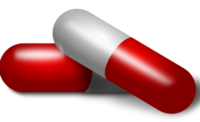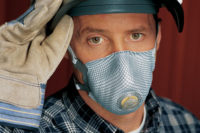They can be called mavericks and that’s a good thing. It takes a little “maverick” in the blood to be effective in the world of professional sales. Most are willing to try anything that offers the potential for a fast boost, a quick sale, increased value, or the strengthening of their relationship with their customer. Too often, however, this quick fix mentality reduces the long-term focus and discipline of the sales force.
“This month we’re trying to promote a specific product line, last month we launched our sales force automation software, next month we’re bringing in that motivational speaker and the month after that we’ll be introducing a new SPIF (special performance incentive formula) to move our dead and obsolete inventory.”
But we already have a system
A SEP is not a Customer Relationship Management (CRM) system. CRM concentrates on the effectiveness of interactions with customers, not the effectiveness of the sales force. It is not a Sales Force Automation (SFA) system. SFA deals with improving the efficiency of the sales force: performing administrative duties more efficiently. A SEP improves the effectiveness of the sales force; doing the right things rather than just doing things right.
Similarly, a SEP is not a canned sales skills training course. Training is really only effective when the students are eager to learn and the material is immediately relevant. Offering an instruction or motivation course without having a structure that continuously encourages proper behavior is a waste of time. Training should therefore be considered a supplement to other initiatives rather than a sales management program. A SEP does not replace sales training.
A Sales Effectiveness Process provides critical structure and motivation for using tools such as CRM, SFA and skills training. It also provides a measurement system to manage the activities that are required to meet specific objectives. Without a focused sales management process, automation and training are wasted because their power is undirected. However, the SEP can provide tremendous value on its own merits even without the independent use of the other supporting tools. Used in conjunction with the SEP, these tools are much more powerful.
Why is this any different?
OK, so what is this thing called SEP? It is a set of best sales practices with a small amount of automation thrown in. SEP is built on the concept of “Managing activities and measuring results.” Focus, process, discipline and accountability become the engine that drives the process.
It all starts with planning
The key to planning is making sure that it deals with reality rather than wishful thinking. A quota from the boss may be called “the plan,” but it has no relation to how the salesperson will achieve it.
I can set myself a goal of becoming four inches taller this year but it’s probably not going to happen. If, in contrast, I decide to lose ten pounds and I can plan out the exact exercise regimen, a specific diet and the activities necessary to get there, I have a real plan and my chance of success is much greater.
In a SEP, each field salesperson identifies a small set of target accounts in his territory to receive intensive sales focus. The number is limited because true targeting must be backed up by action planning, and that requires a lot of effort. (For more information about targeting strategies, see “TLS – Tier Level Selling” by Rick Johnson, available by emailinginfo@ircg.com.)
The salesperson sets numeric objectives for sales and gross margin dollars on each target customer, along with detailed action plans to achieve them. The goals could be for the next year or the next quarter, and will be periodically adjusted to ensure that they are always realistic. This does not mean that a salesperson gets to change his quota. He is still expected to reach the same final numbers. The SEP provides a realistic platform that allows him to adjust how he will get there by tweaking his individual targets and goals, making course corrections as necessary during the year to make sure he will meet his objectives. The SEP helps him identify and utilize any resources inside and outside the company that he needs to attain his goals.
Execution
The SEP circumvents the most common mistake made in distribution today: trying to manage results. Instead, you must manage activities because it’s the activities that produce results. Execution involves the day-to-day activities of the salesperson. For most industries, this entails both planned, proactive tasks and opportunistic, reactive events that the salesperson uncovers by doing the right things in the right place at the right time. It’s critical that the progress of the tasks in target action plans is carefully monitored to avoid surprises. This is the equivalent of monitoring your daily exercise before the effects start to show up on the scale. Once the results are in, the horse is out of the barn and everything you do from that point on is reactive. If you proactively manage the activities, the expected results will follow.
Feedback
The feedback process is where the real magic of the SEP comes in. A universal scorecard is essential for creating competitive energy within your sales force and motivating them to focus on strategic objectives. The scorecard should include a small number of well-designed metrics that are regularly updated. This information is extremely valuable for:
- Identifying the best opportunities for performance improvement
- Creating a level playing field
- Driving continuous improvement
- Providing performance feedback
- Encouraging and measuring cross-functional selling
- Offering key information for the review process
Monthly territory review: the cornerstone of the SEP
The monthly review process is a critical component of the SEP that enables the sales manager and his sales representative to discuss, plan and measure success. This is how a good manager enables his salesmen to capitalize on their natural talents and abilities. The review process should include the following:
1 — Review of all target accounts
2 — Review of all cross-functional selling opportunities, or lack of them
3 — Review of specific territory objectives, including sales to plan and gross profit to plan, and assigned account objectives
4 — Knowledge of products, customers and customer organizations
5 — Ability to apply this market knowledge
6 — Development of a favorable attitude as it pertains to that knowledge and those applied skills
7 — Required course corrections
This is not a session for reprimand or criticism. The review should be designed to achieve maximum participation by the sales representative. Industry best practice has proven that such representative participation is one of the most effective methods of developing both an attitude for learning and a drive for successful accomplishment of goals and objectives.
Next, enthusiasm must be created. Enthusiasm is one of the most important traits for a sales manager because it is contagious. Remember, sales representatives will learn very little if they are mentally falling asleep.
Finally, the sales representative must have confidence in the program. He or she must trust the content of the program and truly believe that it will provide personal benefits.
The review process is extremely critical to the success of the SEP. It must be taken seriously and performed at a standard 100-percent compliance throughout the company.
The SEP gives more than it receives
The last thing you want to do is to burden your sales force with administrative tasks of limited value. Throw away the call reports. They aren’t necessary in the SEP. Besides, they are the closest a salesman will ever come to winning the Pulitzer Prize in journalism. How many times can a sales person report: “I called on Joe, everything is great and we will get to bid on his next requirement”? A well thought-out action plan has more than 100 times the value of any call report.
The focus of the SEP, especially the monthly review, is on improvement through coaching and counseling. It is not a human resources hammer for “slap & point” management. It is simple but powerful for the salesperson using it (by comparison, most distributors have way too many reports, measurements and programs that diffuse focus, dilute effort and may indicate that upper management is really not clear about the company’s strategic direction).
Sales is a profession that requires professional salespeople
Distributors are in constant need of aggressive, creative and resourceful salespeople to have their products specified, accepted and used by customers. Without informed and capable field salespeople, no distributorship could hope to compete in the marketplace today.
But how often do distributors consider the fact that good salespeople, the kind who can help a company really grow, don’t just happen to come along by chance or fate? There is no such thing as a “born salesperson,” because selling ability is much more than a personality trait.
Granted, selling does require certain attributes in a person that some people are born with and some are not. Also, the person must be intelligent, able to grasp ideas and details easily, retain them and recall them for use whenever necessary in selling situations. These factors, and many others relating to personal and emotional characteristics, are contributing elements in the makeup of the professional salesperson. However, these attributes alone do not make a salesperson nor do they guarantee success. It takes more.
A salesperson must have adequate tools, resources and leadership to maximize his effectiveness. That is why the Sales Effectiveness Process is so vital. It is the program that provides the support and the resources to give each and every salesperson the opportunity to maximize his personal effectiveness.
The Sales Effectiveness Process will not replace good sales management, but it can make it much more effective. Remember, it’s not the sales manager’s job to call on accounts and sell product. His job is to make his sales force as effective as he possibly can so that they can achieve the goals and objectives of the organization.
The SEP is the one thing that can light up the sales process like Edison lit up a dark room with his light bulb invention. Let SEP become your light in the darkness of the competitive world of distribution.


